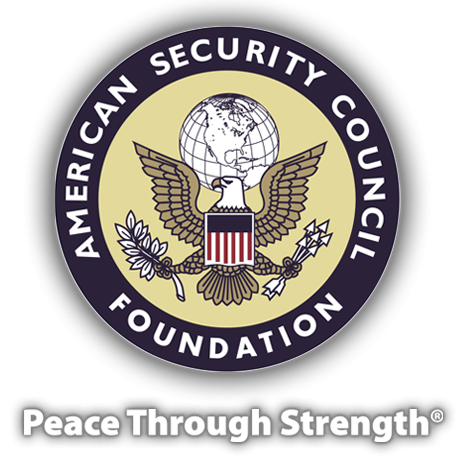Another Step for the Space Force
Saturday, June 1, 2019
By Alan W. Dowd, ASCF Senior Fellow
The Senate Armed Services Committee has voted in favor of standing up a new military branch focused on defending U.S. interests and assets in space. Although the plan still faces obstacles in the House, there is growing bipartisan support for the new branch—and a growing body of evidence that the time has come for America to create a Space Force.
Interests
When President Donald Trump directed the Pentagon “to immediately begin the process necessary to establish a Space Force as the sixth branch of the Armed Forces,” several media outlets panned it as a “Space Farce.” One dismissed it as “ridiculous.” Another news segment featured reporters openly laughing at the idea. Their reactions expose their ignorance about the subject.
What the giggling pundits apparently don’t know is that a military branch dedicated to defending America’s increasingly-vulnerable interests and assets in space is not a new idea—and is anything but a farce.
In the 1990s, the Clinton administration adopted a space policy directing the Pentagon to “develop, operate and maintain space-control capabilities to ensure freedom of action in space and, if directed, to deny such freedom of action to adversaries.”
In 2000, a congressionally-appointed commission openly contemplated the establishment of “a Space Corps within the Air Force” and concluded that “in the longer term” it may necessary to create “a military department for space”—a U.S. Space Force.
In 2016, John Hamre, deputy secretary of defense under President Bill Clinton, argued, “We are not well organized to deal with the new challenges we face in space. The old structure may have been sufficient when space was an uncontested area of operations. That time has passed.” He mentioned as possible alternatives: creating a full-fledged Space Force, carving out “a Space Service…within the Department of the Air Force” like the Navy-Marine Corps relationship, or “elevating the Space Command to become equal in stature to the Strategic Command.”
In 2017, Rep. Mike Rogers (R-Ala.) and Rep. Jim Cooper (D-Tenn.), called for “the creation, under the secretary of the Air Force, of a new Space Corps, as a separate military service responsible for national security space programs.”
Finally, just last month, several leading figures in national security and defense policy signed an open letter expressing “strong support” for the president’s plan to forge an independent Space Force. The bipartisan group of statesmen, intelligence officials, flag officers and astronauts includes William Perry (Defense Secretary under Clinton), Dennis Blair (Director of National Intelligence under President Barack Obama) and Mike McConnell (Director of National Intelligence under President George W. Bush).
“We strongly encourage action to establish the U.S. Space Force, to realize the full potential of space power and space capabilities in order to protect and advance U.S. vital national interests,” they write. Noting that “America’s preeminent position in space activities has contributed to the nation’s political prestige, international influence, scientific knowledge, technological advancement, homeland security, and national defense,” the blue-ribbon group argues that “The establishment of a new military service for space is necessary for putting America on a path to effectively deter conflict from beginning in or extending into space, and, if deterrence fails, to defeat hostile actions and protect our economic and national security interests in space.”
What Perry and his fellow signatories understand—and what those who are mocking the Space Force concept fail to grasp—is that space plays a crucial role in America’s economy and national security. A recent Space Foundation report reveals a global space economy of more than $323 billion. More than 221,500 Americans work in the space sector. Non-government U.S. space spending tops $32 billion annually. Of the 1,300 functioning satellites orbiting earth, 568 are American.
Yet most Americans are oblivious to how much we depend on space for communications, commerce, air travel and ground transport, emergency services and most notably, for national security: Missile-defense warships prowling the Pacific, ground troops patrolling Afghanistan, UCAVs circling over Yemen and Somalia, JDAMs strapped to fighter-bombers loitering over Syria, air squadrons and armored battalions protecting the Baltics, sensors monitoring Russian, Chinese and North Korean nukes, the communications systems that connect troops, weapons, bases, allies and the National Command Authority, the infrastructure of the entire military—all of this depends on space assets.
A typical Army armored brigade, for instance, “contains over 2,000 pieces of equipment that rely on space assets to function,” the Lexington Institute’s Loren Thompson notes. As Defense One adds, the Army’s overall “Space Cadre” has increased from 2,047 personnel in 2011 to 4,169 today.
Citing the fast-emerging threat posed by hypersonic missiles, Undersecretary of Defense Michael Griffin, argues, “We just can’t do what we need to do in missile defense without space.”
In short, space “is no longer simply an enabler and force enhancer,” as Air Force leaders explained in a recent report to Congress, “it is an essential military capability and a key component of joint warfare.”
Threats
Just as maritime trade and seaborne threats obliged us to create the U.S. Navy, just as commercial air travel and airborne threats obliged us to create the U.S. Air Force, a mix of economic opportunities and security risks oblige us to create a U.S. Space Force.
China and Russia represent most of those risks.
“China and Russia are developing, testing, and fielding space and counterspace weapon systems that threaten our ability to use space for national security and economic purposes,” Perry and his cosigners conclude. As a result, “America’s long-standing strategic advantage in space is eroding.”
China has “the most rapidly maturing space program in the world,” according to a 2015 Pentagon report. A 2016 report adds, “PLA writings emphasize the necessity of ‘destroying, damaging and interfering with the enemy’s reconnaissance…and communications satellites,’ suggesting that such systems, as well as navigation and early warning satellites, could be among the targets of attacks designed to ‘blind and deafen the enemy.’” Thus, “The PLA is acquiring a range of technologies to improve China’s counter-space capabilities.” These include “directed-energy weapons…satellite jammers…anti-satellite capabilities.”
The Pentagon’s 2019 report on China notes that Beijing successfully launched 38 space vehicles in 2018—China’s “largest space launch year to-date.” The Pentagon also reports that China “continues development of multiple counterspace capabilities designed to degrade and deny adversary use of space-based assets during a crisis or conflict” and “has probably made progress on the antisatellite missile system it tested in July 2014.”
China has conducted at least three tests of anti-satellite weapons (ASATs): a 2007 test that purposely rammed a kill vehicle into an aging Chinese satellite; the 2014 test that demonstrated the same capability without creating a minefield of space debris; and a 2013 test that sent an ASAT into what published reports describe as “ultra-high altitude…three-times higher than the weapon tested in 2007 and 2014.”
Likewise, Russia tested a new ASAT in 2015. In 2013 and 2014, the Russian military deployed a number of satellites capable of “rendezvous and proximity operations”—military parlance for maneuvering around other satellites in order to disrupt or disable them. Russia recently deployed 37 satellites in a single rocket launch. And to remove any doubt about how Russia intends to use its space assets, Moscow announced in 2015 that Russia’s “air forces, anti-air and anti-missile defenses, and space forces will now be under a unified command structure” known as the Aero-Space Forces.
Steps
“It is a national imperative that we posture ourselves to deter any conflict that would extend to space, and if deterrence were to fail, that we fight and win,” argues Gen. John Raymond, commander of Space Command.
As detailed above, there’s an emerging consensus among policymakers that the best way to do that is to create a Space Force.
Under the plan approved by the Senate Armed Services Committee, the commander of SPACECOM would initially serve as head of the U.S. Space Force. “After one year,” Defense One explains, “the positions would separate into two four-star billets: one general would lead Space Force as its chief of staff, and the other general would command U.S. Space Command. At that point, the Space Force chief would become a member of the Joint Chiefs of Staff, alongside the chiefs of the Army, Navy, Air Force, Marines and National Guard.”
This is a big step, to be sure. It’s not every day that a new branch of the military is created. But it’s the right step to take to defend America’s interests and deter America’s enemies. As George Washington counseled, “There is nothing so likely to produce peace as to be well prepared to meet an enemy.”
That time-tested truth applies whether the enemy lurks on land, at sea, in the sky or in space.











